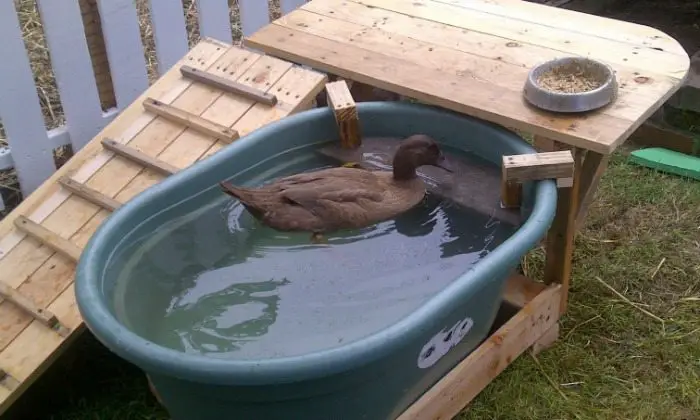Why raise ducks? Most duck raisers will tell you that the eggs from their own ducks taste a good deal better than store-bought eggs. Ducks are fun and easy to raise, too. They are cute and they provide you with a steady supply of eggs. And yes, you can even raise them in small spaces.
Thinking of raising ducks in your backyard but don’t have a pond or access to any small body of water? Then build your ducks their own pond in your backyard with this easy duck deck project that you can DIY!
If you don’t like the idea of doing a heavy project and a permanent build, this duck deck is definitely for you. Unlike creating a pond, this project doesn’t require digging a large hole in your yard. It only involves basic woodwork.
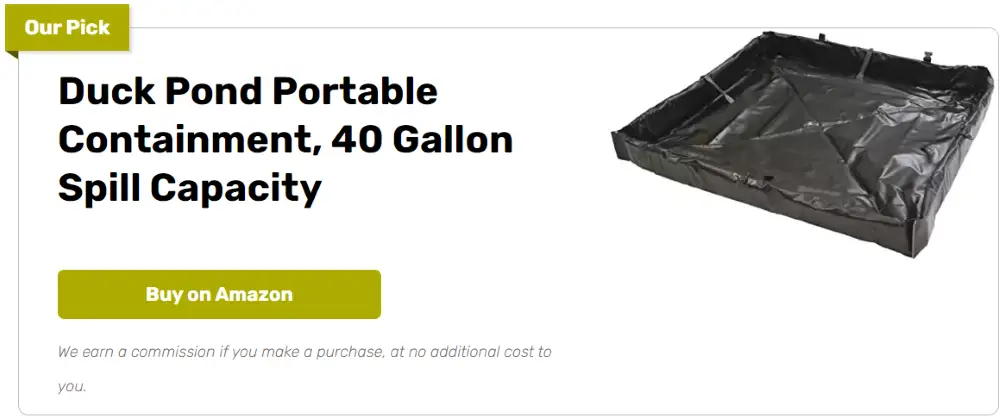
Compared to sinking a water trough in the ground, this is definitely easier to clean. You simply drain the water by opening the spigot at the bottom of the tub and that’s it. (Now that’s a way to water parts of your lawn at the same time too!) You can also easily take out the tub if you need to do some thorough cleaning.
This duck deck is a nice way to prevent your ducks from making a muddy mess as well!
Aside from being easy to build and easy to maintain, this duck deck is an inexpensive project. You can use reclaimed timber or pallets and a used water tub that’s large enough for your ducks to swim in. An old bathtub would be great, too, especially since it can accommodate more ducks.
Every duck deck is different. Design and measurements would depend on the size of your backyard and the shape of the tub. It would also depend on the ducks themselves – some ducks are clumsy. :p So when designing and building your duck deck make sure that all your pets will be comfortable using it, especially with the ramp.
To further improve this idea, we recommend adding a roof to the design. This is important to protect your ducks not just from intense heat, but also from predators such as hawks and eagles.
Have a look at our album below to help you come up with your own duck deck design.
As we’ve said, this project is really simple, easy, and inexpensive, and anybody who has ducks in their backyard can build it!
So is this going to be your next project?
Contents
Building a Duck Deck
Materials
- Reclaimed Wood
- Plastic Water Trough
- Plastic Spigot with Nut / Bathtub Plug
- Wood Screws
Tools
- Measuring Tape
- Saw
- Cordless Drill
- Sander
Instructions
Step 1: Design Your Duck Deck
- Measure the available space in your backyard to determine the size of your duck deck.
- Sketch a simple design, including dimensions for the base frame that will hold the water trough or bathtub. Ensure there’s enough room for the ducks to comfortably move around.
Step 2: Prepare the Wood
- Using reclaimed wood, cut the pieces according to your design measurements using the saw.
- Sand all wood pieces to remove rough edges and surfaces, ensuring the safety of your ducks and ease of handling during assembly.
Step 3: Build the Frame
- Lay out the cut pieces to form the base frame that will support the water trough or bathtub.
- Secure the joints using wood screws with the cordless drill. Ensure the frame is sturdy and level.
Step 4: Install the Water Trough/Bathtub
- Place the water trough or bathtub onto the frame. It should fit snugly within the frame to prevent movement.
- If necessary, adjust the frame size by cutting additional wood or adding more screws for enhanced stability.
Step 5: Install the Drainage System
- If using a plastic spigot, drill a hole at the bottom of the water trough or bathtub for the spigot. Ensure it’s the correct size for the spigot nut.
- Install the spigot and secure it with the nut. If using a bathtub, you may use the existing drain with a bathtub plug.
Step 6: Add Safety Features
- If the edges of the trough or tub are high, build a ramp using leftover wood. This will help ducks enter and exit the deck easily.
- Ensure the ramp has a gentle incline and is wide enough for the ducks. Sand the ramp thoroughly to prevent slipping.
Step 7: Water Test and Finishing Touches
- Fill the trough or bathtub with water to test the drainage system. Check for any leaks around the spigot and ensure the water drains smoothly.
- Make any necessary adjustments to the spigot or frame to correct issues.
Step 8: Positioning and Final Setup
- Move the duck deck to its designated spot in your backyard. Position it in a shaded area if possible to keep the water cool and provide comfort to your ducks.
- Add some straw or soft bedding around the deck for extra comfort for your ducks.
Click on any image to start the lightbox display. Use your Esc key to close the lightbox.![]()
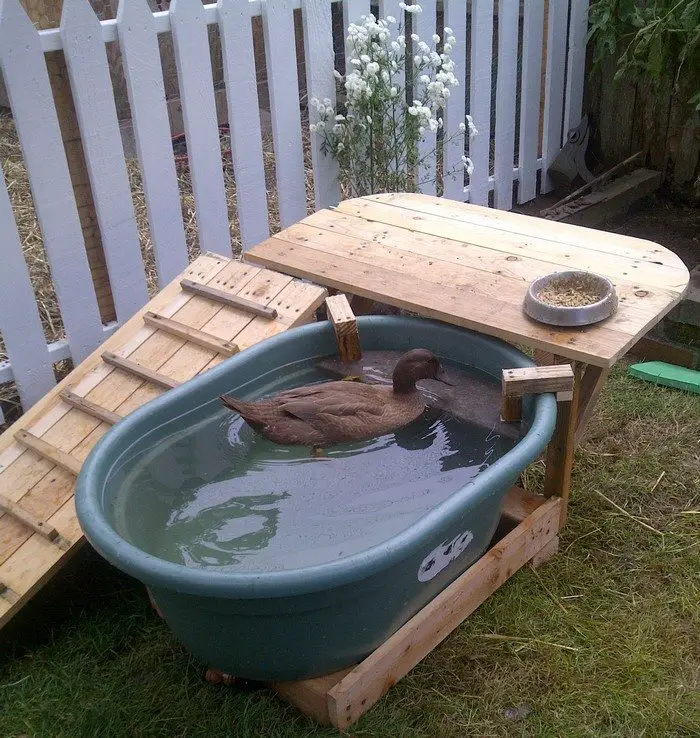

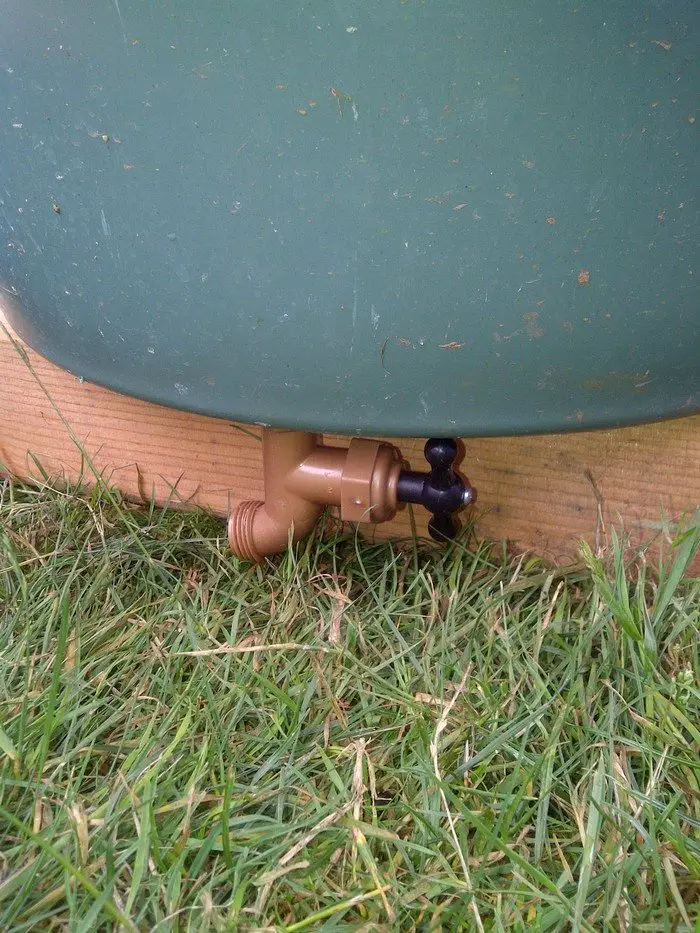
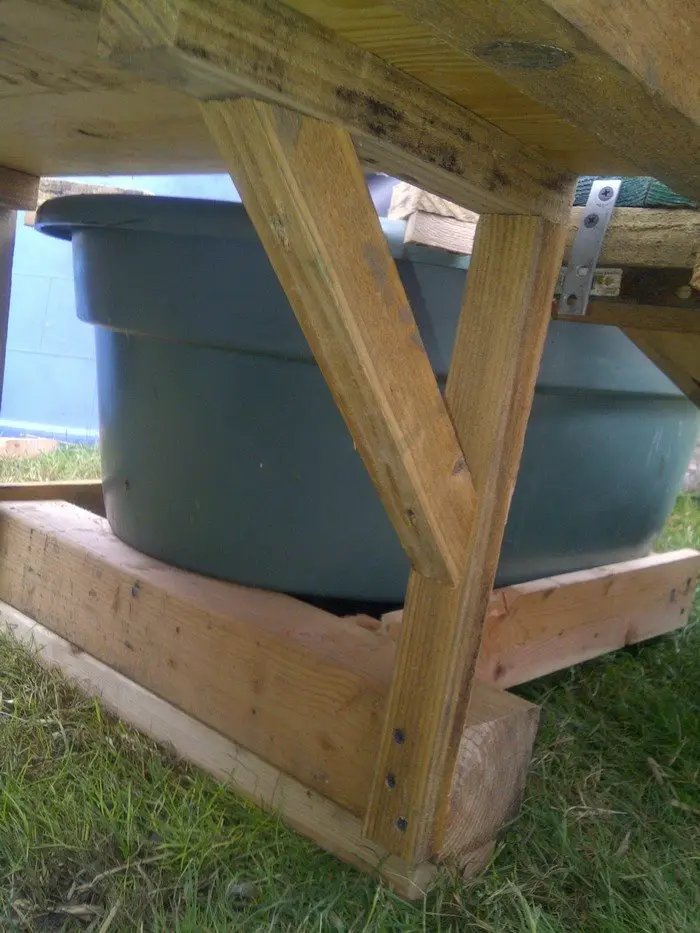

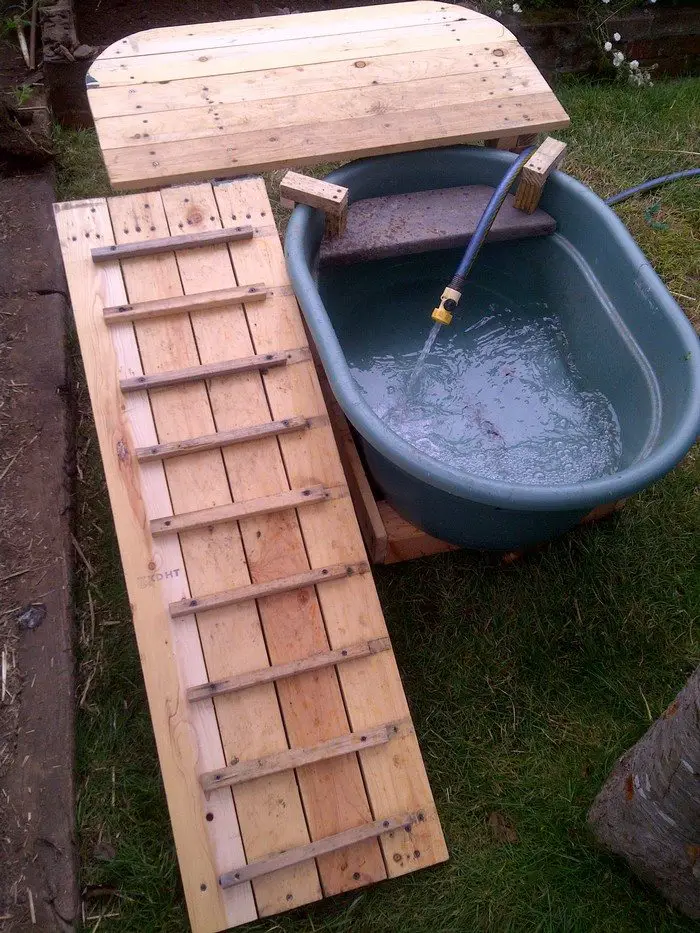
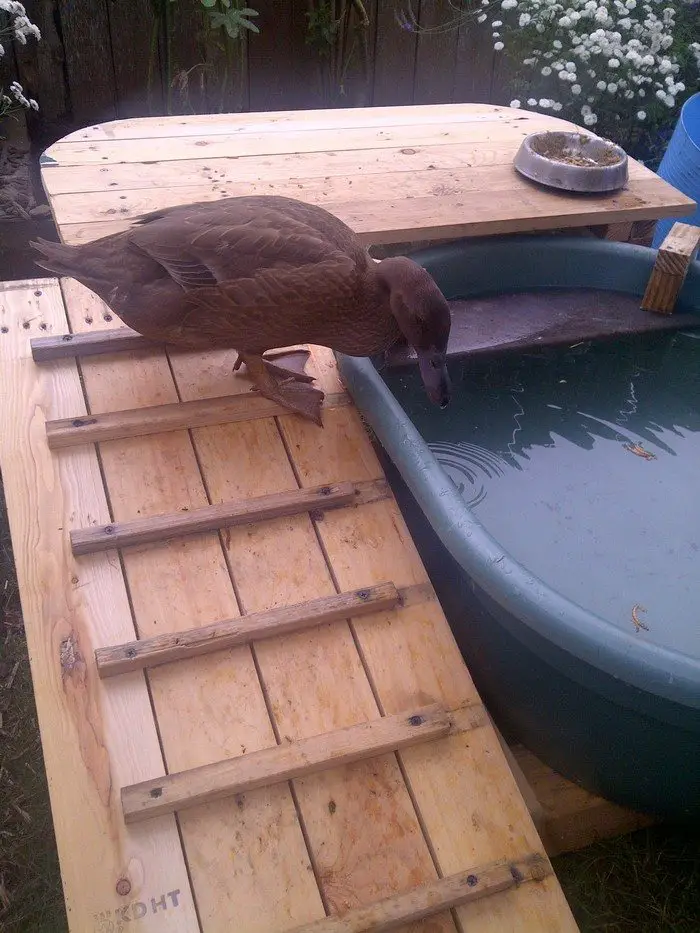
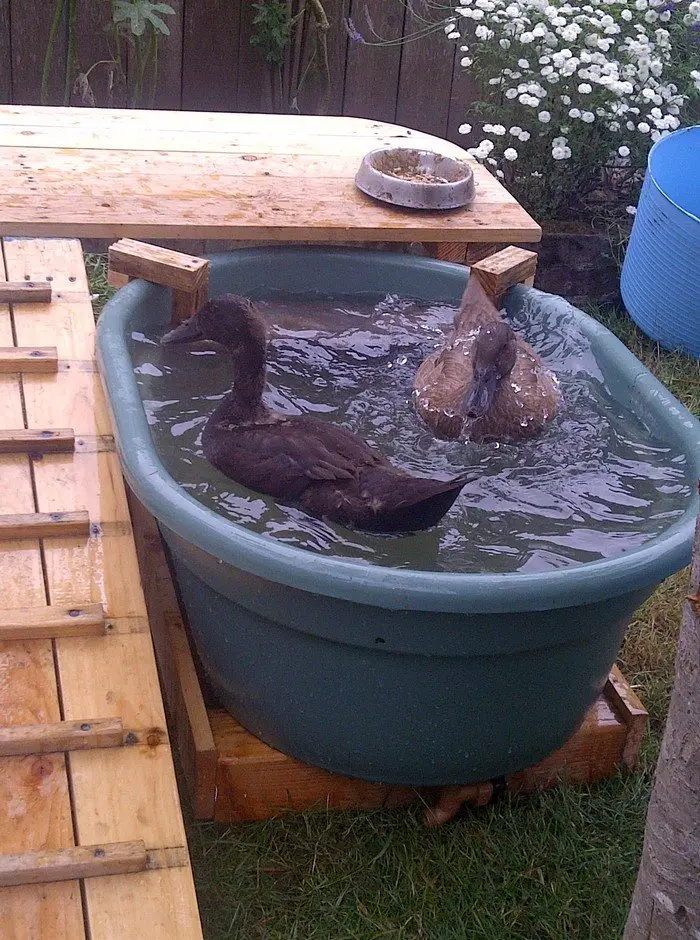

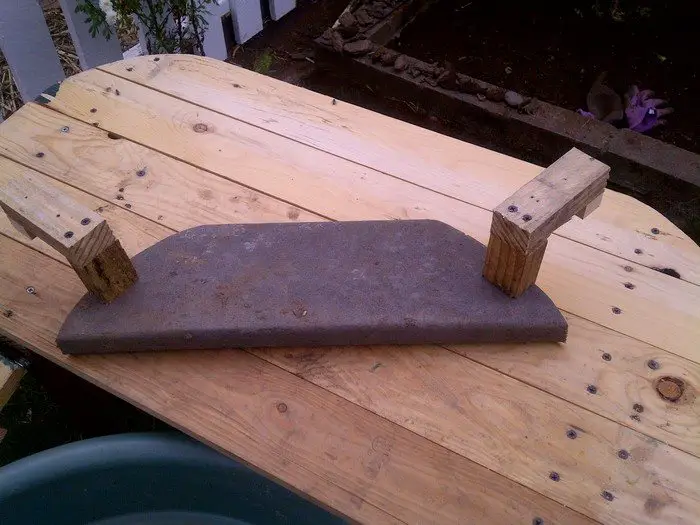


You can get more step-by-step instructions here…
Here’s a quick video…
Benefits of Duck Decking Over Traditional Ponds
For many duck owners, providing a suitable aquatic environment can be a challenge, especially when space and resources are limited. This is where a duck deck offers a practical alternative to traditional ponds. Duck decks are not only easier to install and maintain but also more versatile for various spaces. Below, we explore several benefits of opting for a duck deck over a traditional pond.
Ease of Maintenance
One of the most significant advantages of a duck deck is its ease of maintenance. Unlike traditional ponds which can require complex filtration systems and frequent dredging to remove sludge, a duck deck is straightforward to clean. By simply draining the water through a spigot and rinsing the surface, duck decks can be kept clean with minimal effort. This ease of maintenance makes the duck deck a more hygienic option for raising healthy ducks.
Cost-Effective Solution
Building a traditional pond can be costly, involving excavation, waterproofing, and often, professional help. In contrast, a deck can be constructed using reclaimed materials like wood and repurposed bathtubs or troughs. The reduced material and labor costs make duck decks an affordable option for many duck owners, allowing them to provide an aquatic environment without a significant financial burden.
Adaptability to Various Spaces
Duck decks are highly adaptable to different spaces, making them ideal for urban or suburban settings where space may be restricted. Traditional ponds require a significant footprint and a suitable landscape setting. However, a deck can be built in a much smaller area and even placed on patios or in small backyards, ensuring that even urban ducks can enjoy a swim.
Improved Health and Safety
Duck decks allow for better control of the water quality and environment, leading to healthier living conditions for ducks. Traditional ponds can harbor parasites and bacteria, which are difficult to control. A deck’s contained and easily cleanable environment helps prevent diseases and keeps ducks healthier. Additionally, the controlled setting of a duck deck reduces the risk of predators, which can be a concern with ground-level ponds.
Versatility in Design
Each deck can be customized to fit the specific needs of your ducks and the aesthetics of your yard. Whether incorporating ramps for easy access or adding decorative elements like planters, duck decks offer versatility that traditional ponds often cannot. This customization ensures that your duck deck not only serves a functional purpose but also enhances the visual appeal of your outdoor space.
Environmental Benefits
Finally, decks can offer environmental benefits over traditional ponds. By using reclaimed materials for construction and requiring less water, duck decks promote sustainability. They also prevent the alteration of natural landforms and potential ecosystem disruption that can occur with traditional pond digging.
Choosing a duck deck over a traditional pond provides numerous benefits, ranging from practical maintenance to environmental sustainability. This makes the duck deck an attractive option for duck owners looking to create a clean, safe, and enjoyable aquatic space for their feathered friends.
Safety Features for Duck Decks
When creating any kind of animal habitat, including duck decks, safety is of the utmost importance. Making sure your duck deck has the right safety features gives you piece of mind in addition to protecting your ducks. These are some crucial safety elements to take into account while constructing or upgrading a duck deck.
Non-Slip Surfaces
Ducks can be clumsy, especially when moving from water to dry land. To prevent slips and falls, it’s crucial to incorporate non-slip surfaces on your duck deck. This can be achieved by choosing textured materials for the construction or applying non-slip coatings to smoother surfaces. Such adaptations make the duck deck safer for ducks to move around, especially when they are wet.
Protective Railing
While ducks are generally good swimmers, younger or weaker birds might struggle if they cannot easily exit the water. Installing a low railing around the perimeter of the duck deck can prevent ducks from accidentally falling off the sides. This railing should be high enough to keep ducks contained but low enough to allow them easy access to the water.
Easy Access Ramps
Ramps are an essential feature of any deck, facilitating easy entry and exit from the water. These ramps should have a gentle incline and be wide enough to accommodate ducks comfortably. The surface of the ramp should also be treated to prevent slipping, ensuring ducks can safely move between the water and the duck deck. Regular checks and maintenance of these ramps are necessary to ensure they remain secure and functional.
Including these safety elements in the design of your deck contributes to the creation of a safe haven for ducks. A well-thought-out duck deck facilitates safe swimming for the ducks and also eases the management and enjoyment of duck-keeping for you.
Conclusion
Building a duck deck offers a practical and enjoyable solution for duck owners looking to enhance their backyard space. With proper design and safety features, a duck deck provides a clean, accessible, and safe environment for ducks to thrive. Overall, it represents a cost-effective and sustainable option for anyone interested in raising ducks with ease and efficiency.
We have more ways to create a comfortable environment for your ducks. Check out our duck house built from a spool cable housing project.

